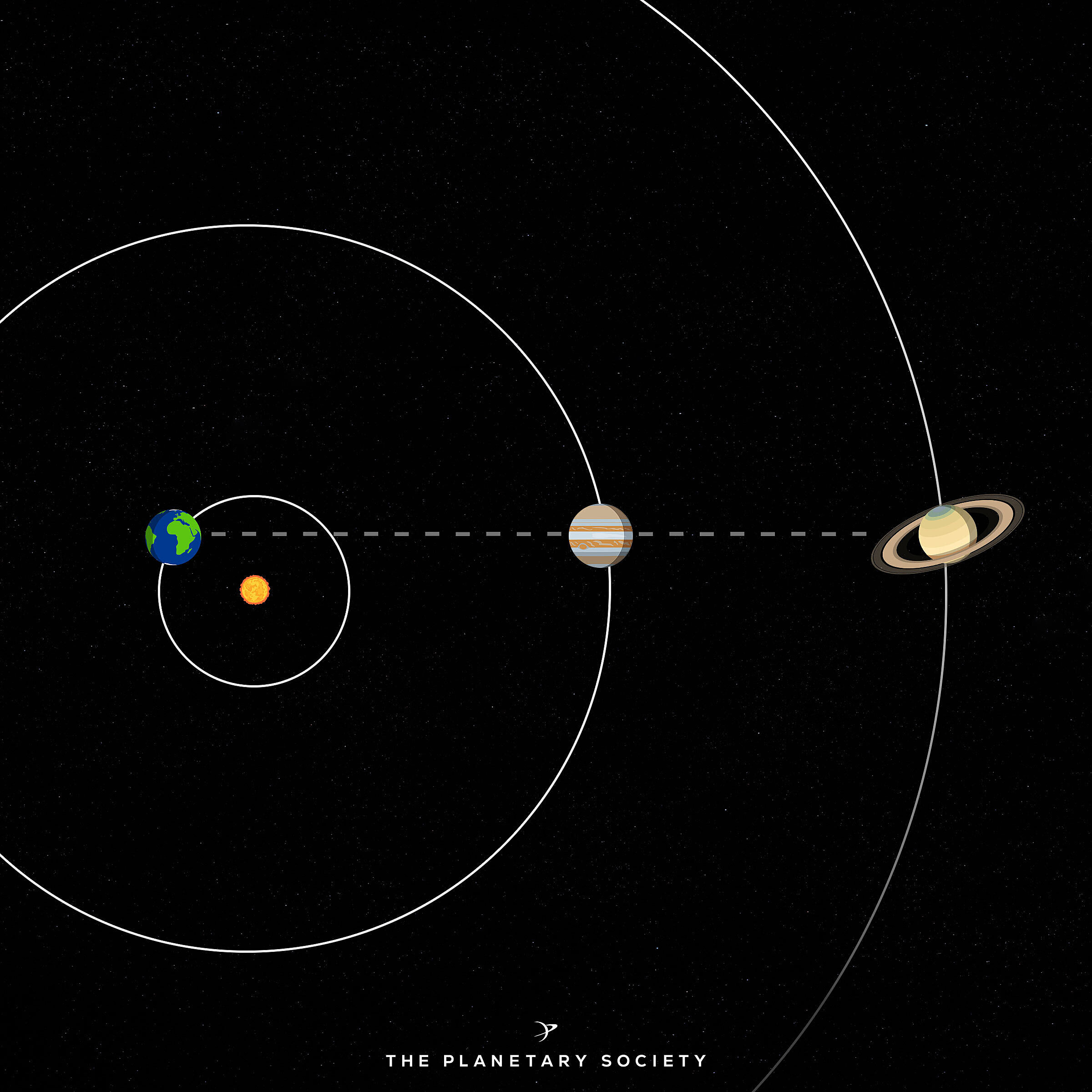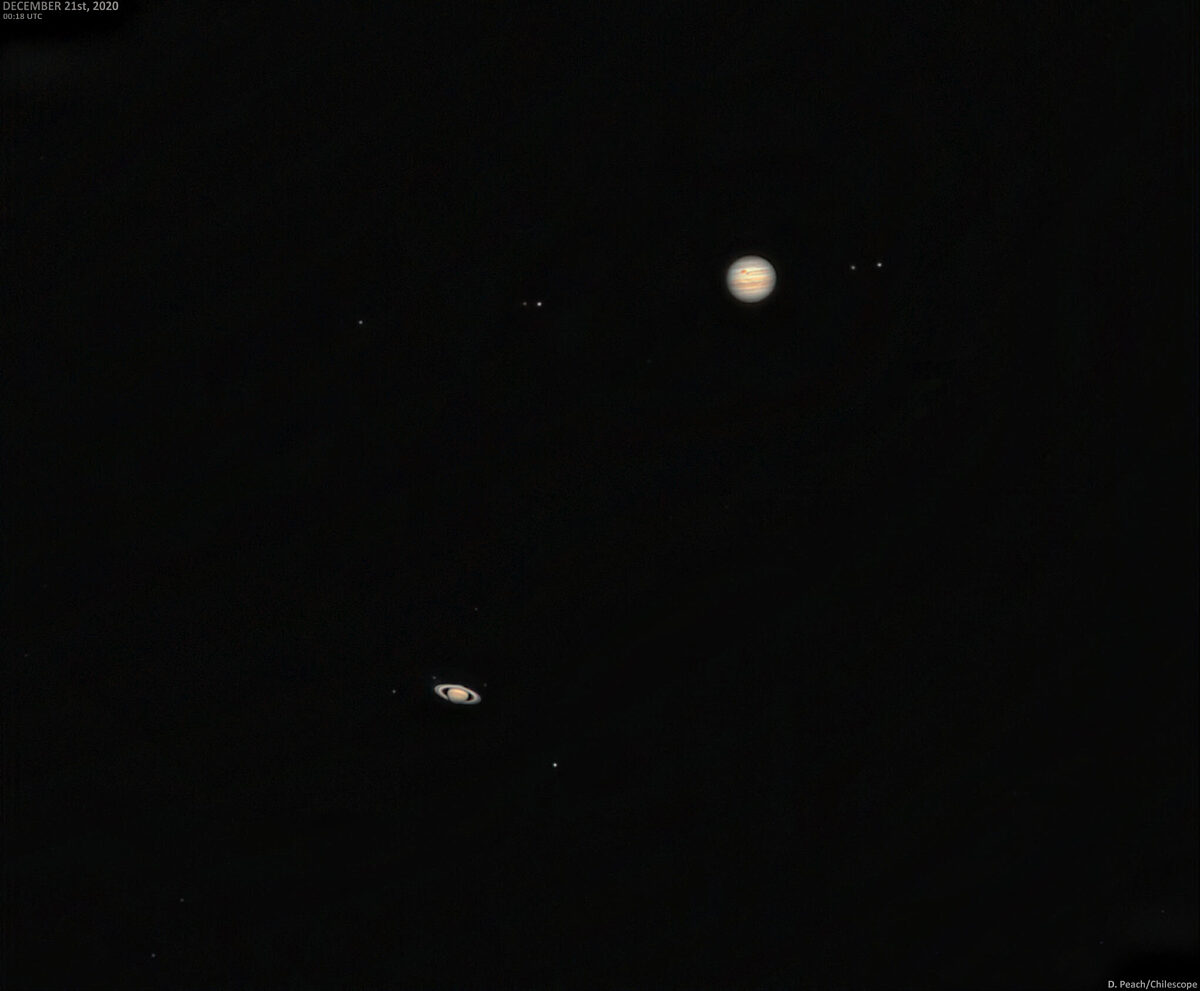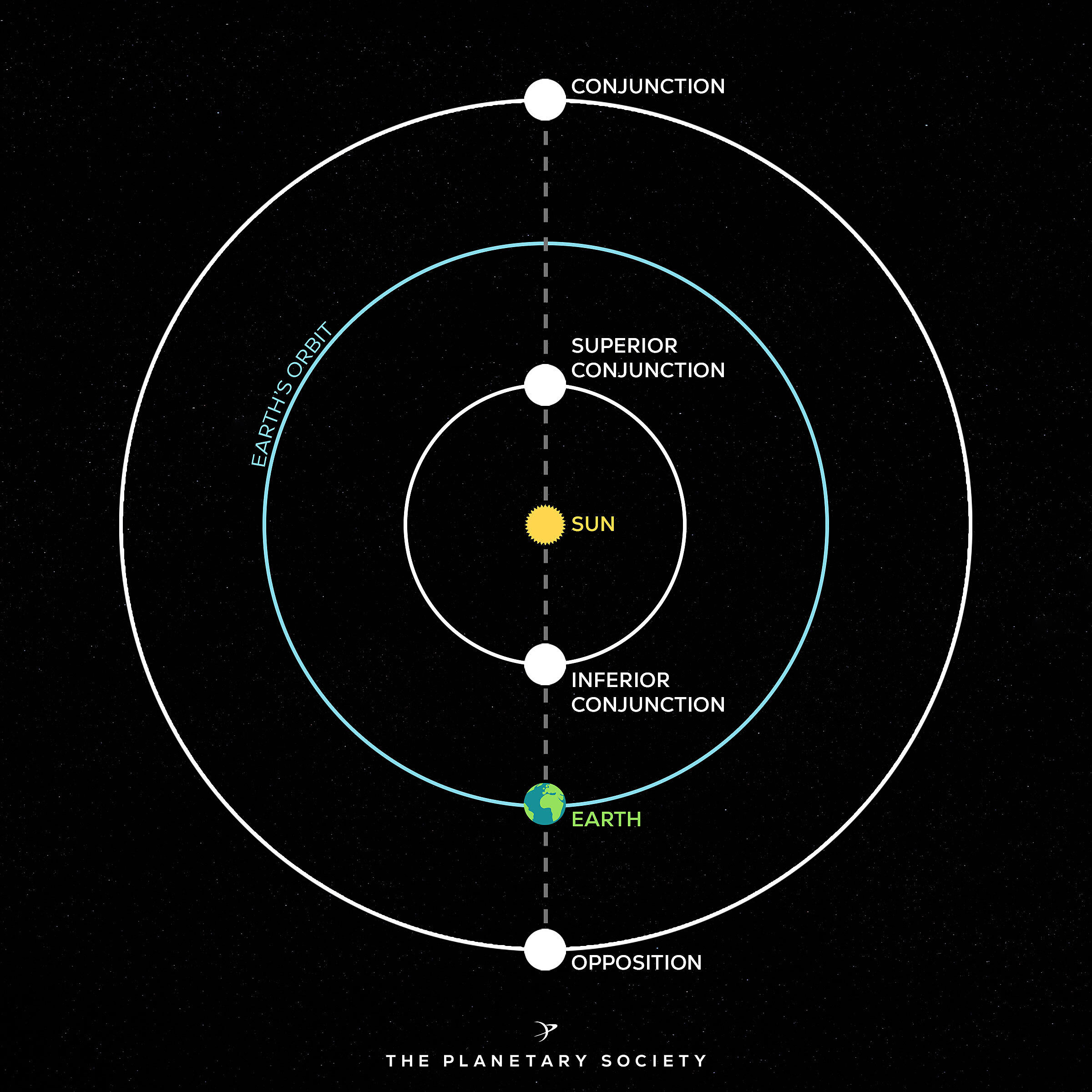Kate Howells • Jan 18, 2024
What is a planetary conjunction?
A planetary conjunction is when two or more planets appear close together from our perspective on Earth. If you ever tune into forecasts about what to look for in the night skies, you’ll likely hear about a conjunction when it occurs, since it’s a special opportunity for astronomers — from professional scientists to casual observers — to see multiple worlds at once.
Planetary conjunctions happen because the planets of our Solar System orbit the Sun in roughly the same plane. As they go around the Sun at different speeds in their own orbital paths, sometimes planets are far apart from one another and at other times they orbit on the same side of the Sun as each other. When two planets are in the same part of their orbital path and this lines up with our view from Earth, we get a conjunction.

It's important to note that the planets are never actually close to each other in space. The orbits of the planets are separated by hundreds of millions of kilometers, so even when two planets are lined up from the perspective of Earth, they are still extremely far apart in space.
You’ll sometimes hear the term ‘Great Conjunction,’ which specifically means a conjunction between Jupiter and Saturn. These planets are the largest in our Solar System and both tend to appear very bright in the night sky, so when they come together in the sky (about every 20 years) it’s a great sight to behold. With the help of a telescope, you may also be able to see several of the two planets’ large moons, capturing a multitude of fascinating worlds all in one view.

What is a planetary occultation?
An occultation is the ultimate planetary line-up. A planetary occultation happens when a larger planetary body passes in front of a smaller one, blocking the view of the smaller one from Earth. The most common kind of occultation happens when the Moon passes in front of a planet, since it appears so large in Earth’s night sky.
Extremely rarely, a planet will occult another planet. This is so rare because planets appear very small in Earth’s skies, so their alignment has to be extraordinarily precise for them to actually produce an occultation. The next time this happens will be on Nov. 22, 2065, when Venus will occult Jupiter.
What does it mean when a planet is at conjunction?
Another term stargazers may hear is that a planet is at conjunction. The planets who orbit the Sun beyond Earth (Mars, Jupiter, Saturn, Uranus, and Neptune) are at conjunction when they are on the far side of the Sun from the Earth and all three bodies are nearly in a straight line.
When the innermost planets (Mercury and Venus) are on the far side of the Sun it is called superior conjunction. When they are between the Earth and the Sun, it is called inferior conjunction.

In all these cases, it’s difficult or impossible to observe a planet because the Sun’s light blocks it out and/or interferes with observing the planet.
When the planets beyond Earth are on the far side of the Earth from the Sun, it is called opposition.This is the ideal time for viewing a planet because it is fully illuminated by the Sun from our perspective, and it is at its closest point to Earth.
Support our core enterprises
Your support powers our mission to explore worlds, find life, and defend Earth. You make all the difference when you make a gift. Give today!
Donate

 Explore Worlds
Explore Worlds Find Life
Find Life Defend Earth
Defend Earth

